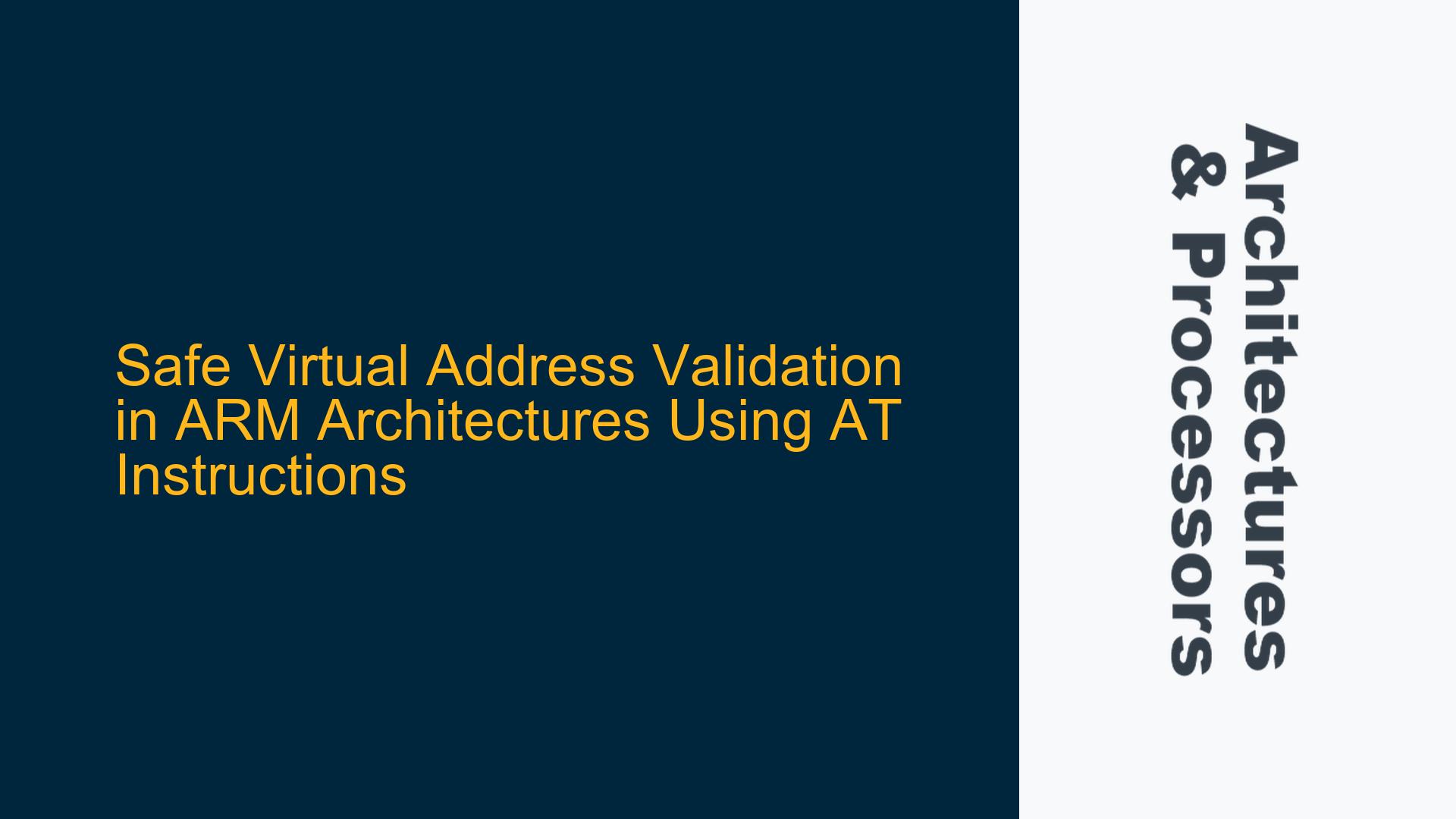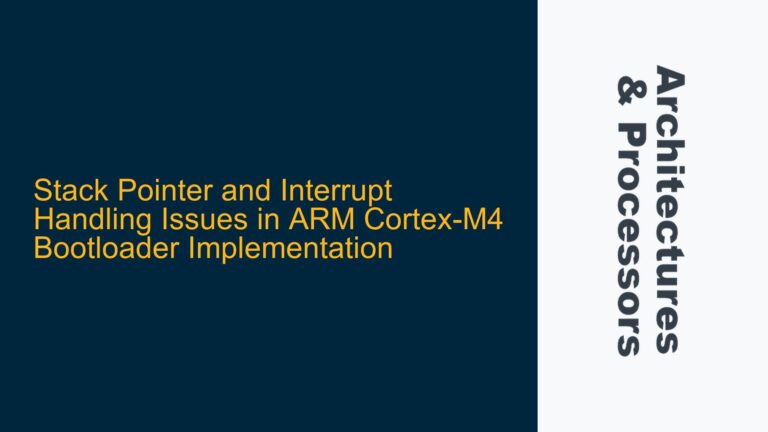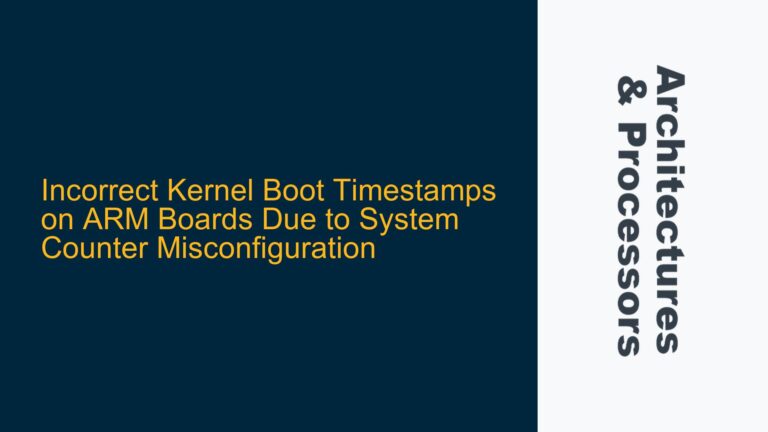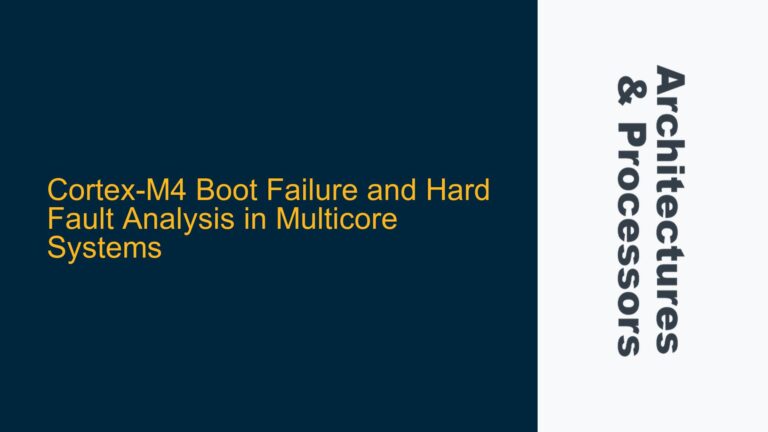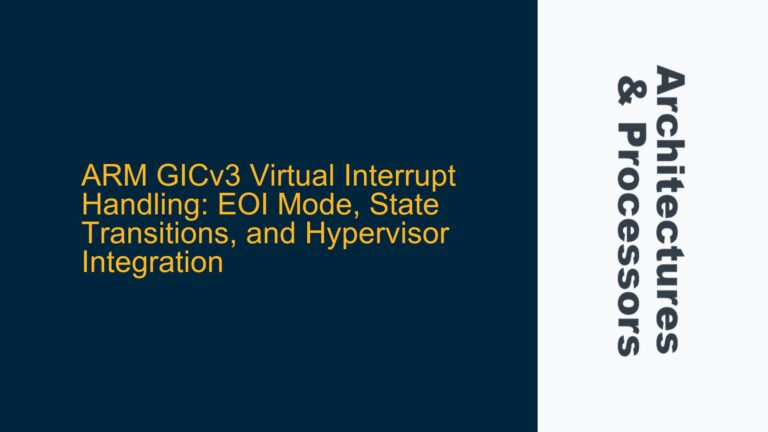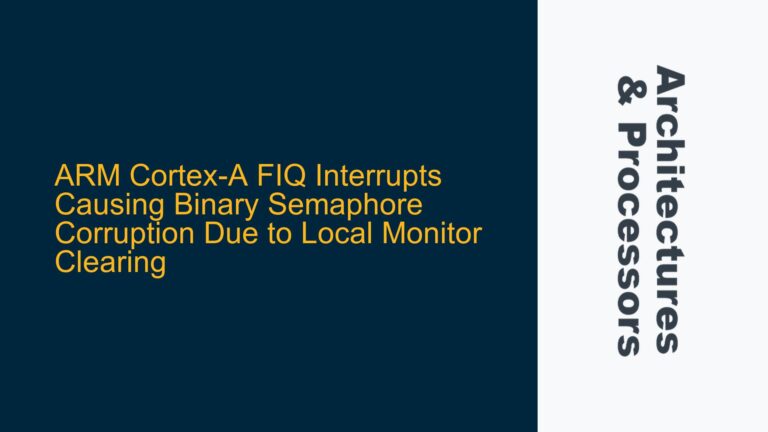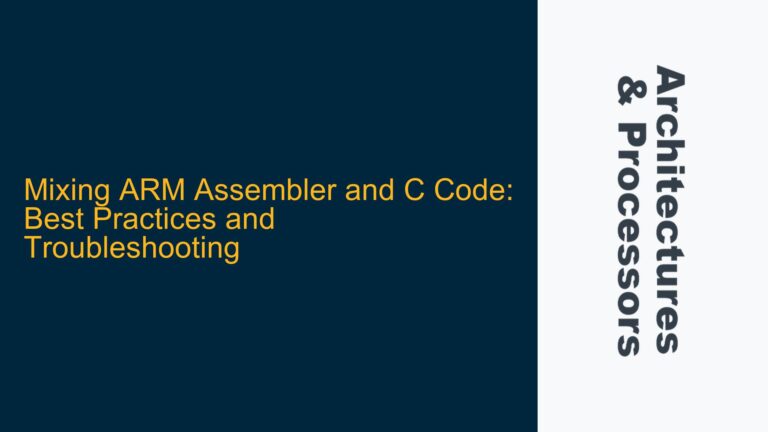ARM Virtual Address Validation with AT Instructions and MMU Considerations
The process of validating whether a virtual address is mapped in an ARM architecture is a critical task, especially in systems where memory management is dynamic or where safety and reliability are paramount. The ARM architecture provides the Address Translation (AT) instruction, which is specifically designed to query the Memory Management Unit (MMU) and determine if a virtual address is mapped to a physical address. This operation is essential for ensuring that memory accesses do not result in exceptions, which can disrupt system operation or lead to undefined behavior.
The AT instruction is part of the ARMv8-A architecture and is used to perform address translation in a controlled manner. When executed, the AT instruction queries the MMU to translate a given virtual address to a physical address. If the virtual address is not mapped, the instruction will return a fault, indicating that the address is invalid. This mechanism is crucial for systems that need to handle memory dynamically, such as operating systems, hypervisors, and real-time systems.
However, the use of the AT instruction is not without its complexities. One of the primary considerations is the state of the MMU. The MMU must be enabled for the AT instruction to function correctly. If the MMU is disabled, the concept of virtual addressing is effectively nullified, as all addresses are treated as physical addresses. In such a scenario, the AT instruction would not be able to perform its intended function, and attempting to use it could result in unpredictable behavior.
Another consideration is the performance impact of using the AT instruction. While the AT instruction is a powerful tool for address validation, it is not without cost. Each invocation of the AT instruction requires the MMU to perform a lookup in the translation tables, which can be a relatively expensive operation, especially in systems with complex memory hierarchies or large address spaces. Therefore, the use of the AT instruction should be carefully considered in performance-critical applications.
MMU Dependency and Virtual Address Translation in ARM Systems
The dependency of the AT instruction on the MMU is a fundamental aspect of its operation. The MMU is responsible for managing the translation of virtual addresses to physical addresses, and it does so through a series of translation tables that define the mapping between the two address spaces. When the MMU is enabled, it uses these tables to translate virtual addresses to physical addresses on-the-fly, allowing the system to manage memory efficiently and securely.
If the MMU is disabled, the system operates in a mode where virtual addressing is not used, and all addresses are treated as physical addresses. In this mode, the AT instruction cannot function as intended, as there are no translation tables to query. Attempting to use the AT instruction with the MMU disabled would likely result in a fault, as the instruction would be unable to perform the necessary address translation.
This dependency on the MMU has implications for system design, particularly in systems where the MMU may be dynamically enabled or disabled. For example, in a system that boots with the MMU disabled and then enables it later in the boot process, care must be taken to ensure that the AT instruction is not used before the MMU is fully initialized and enabled. Similarly, in systems that may disable the MMU for certain operations, such as low-level debugging or direct memory access (DMA) operations, the use of the AT instruction must be carefully managed to avoid faults or undefined behavior.
In addition to the MMU dependency, the AT instruction also relies on the correct configuration of the translation tables. If the translation tables are not properly set up, the AT instruction may return incorrect results or fail to detect valid mappings. This underscores the importance of ensuring that the MMU and its associated translation tables are correctly configured before relying on the AT instruction for address validation.
Implementing Safe Virtual Address Validation with AT Instructions
To safely implement virtual address validation using the AT instruction, several steps must be taken to ensure that the instruction is used correctly and that the system remains stable and reliable. The first step is to ensure that the MMU is enabled and properly configured before attempting to use the AT instruction. This involves setting up the translation tables and enabling the MMU in the system control register.
Once the MMU is enabled, the AT instruction can be used to validate virtual addresses. The typical workflow involves executing the AT instruction with the virtual address in question and then checking the result to determine if the address is mapped. If the AT instruction returns a fault, the address is not mapped, and the system should handle this case appropriately, such as by returning an error or taking other corrective action.
However, it is important to note that the AT instruction is not a silver bullet for all address validation scenarios. In some cases, it may be necessary to use additional techniques to ensure that memory accesses are safe. For example, in systems with multiple cores or threads, care must be taken to ensure that memory mappings are consistent across all cores. This may involve using memory barriers or other synchronization techniques to ensure that changes to the translation tables are properly propagated.
Another consideration is the performance impact of using the AT instruction. As mentioned earlier, the AT instruction can be relatively expensive in terms of performance, especially in systems with complex memory hierarchies. Therefore, it is important to use the AT instruction judiciously and to consider alternative approaches where possible. For example, in some cases, it may be possible to use software-based techniques to validate addresses, such as by maintaining a list of valid memory regions and checking addresses against this list.
In conclusion, the AT instruction is a powerful tool for validating virtual addresses in ARM architectures, but it must be used with care. By ensuring that the MMU is properly configured and enabled, and by considering the performance implications of using the AT instruction, developers can implement safe and reliable virtual address validation in their systems. Additionally, by understanding the limitations of the AT instruction and using it in conjunction with other techniques, developers can create robust systems that handle memory safely and efficiently.
